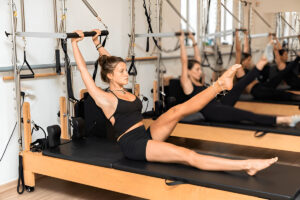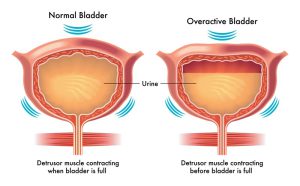Yoga and Pilates are not new forms of exercise, but it seems there has been a development of new interest in these health and fitness styles after recommendations from various celebrities and great public exposure. Although they are often put in the same category, they have significant differences. There are various alternatives to these categories of exercise available at every gym and studio to suit the needs of different individuals. In this article, we explore Yoga and Pilates to determine which one is right for you.
What is Yoga?
Yoga originated from India nearly 3000 years ago. It has changed and spread all over Western countries over the past decades. Yoga is composed of several types: Vinyasa, Yin, Ashtanga, Power, Hatha, Hot, and Iyengar. Nevertheless, all these types share specific features.
Throughout the different forms of Yoga, you can move your body into different positions and concentrate on that movement while deeply breathing. These forms of poses and changes can differ during various exercises. However, they aim to link you to your body and breath.
What is Pilates?
Joseph Pilates introduced Pilates during World War I in an attempt to restore the vigor of bed-ridden soldiers. This type of exercise centers on small movements that need the use of crucial stabilizing muscles of the back and core. It mainly emphasizes beginning every exercise with regulated breath that activates the contraction of core muscles. You can exercise this on a mat or with special equipment. The equipment used is unique because it utilizes springs, levers, and weight to produce resistance. You can choose equipment such as Pilates reformer from a variety that suits your needs. Examples of this type of equipment include Sportline superior reformer bundle, Sportline superior Cadillac-reformer trapeze table, and jump board bundle, and all these can help you achieve your goals during Pilates workout.
So, Which One is the Best?
Although Pilates and Yoga share many advantages, they also vary in practice. One might work better for you based on your fitness goals. While Yoga uses the body to connect the mind, Pilates uses mindfulness to connect to the body’s inner workings. Specialists say that Pilates strengthens the body with the main focus on the core. Yoga does not emphasize any part of the body but emphasizes the breath.
Moreover, Yoga incorporates breath for relaxation, while Pilates uses breath to energize your muscles. Yoga training involves holding poses for several breath cycles while Pilates keeps you moving except during cool-down stretching. According to fitness specialists, Yoga is more intimidating than Pilates to some people.
People with various ailments might not like the flow and transition side of Yoga because it might be too difficult. However, there are adjustments and equipment that make Yoga accessible if you have any health condition. However, Yoga might be difficult for you in such a state due to deep stretching. This form of exercise has been challenging for most people, and they resort to Pilates because of equipment assistance and strength exercise.
In terms of weight management, both can help you achieve weight management goals. However, Pilates could be better when compared in terms of which one raises the heart rate. This effect on weight loss depends on the manner and pace of the exercise. More rigorous exercise leads to more calories burned. It is also beneficial to older adults or those recovering from an injury because of its low-impact workout and movements.
You can also use Pilates to rehabilitate anyone who suffered a traumatic brain injury, such as an accident. This type of exercise is a safer method for those vulnerable to injury or those trying it for the first time. It has become the pillar of rehab, especially for back problems. A typical Pilates workout involves several exercises and stretches.
Each is conducted with particular attention to appropriate breathing techniques and control of abdominal muscles. To gain the maximum benefits, you should perform it at least twice or thrice a week. You should notice changes after 10 to 20 sessions.
Conclusion
Ultimately, the choice of a workout depends on personal preferences and goals. Before starting any form of fitness, talk to your doctor or certified instructor, especially if you have a medical condition or physical restrictions to avoid injury.



